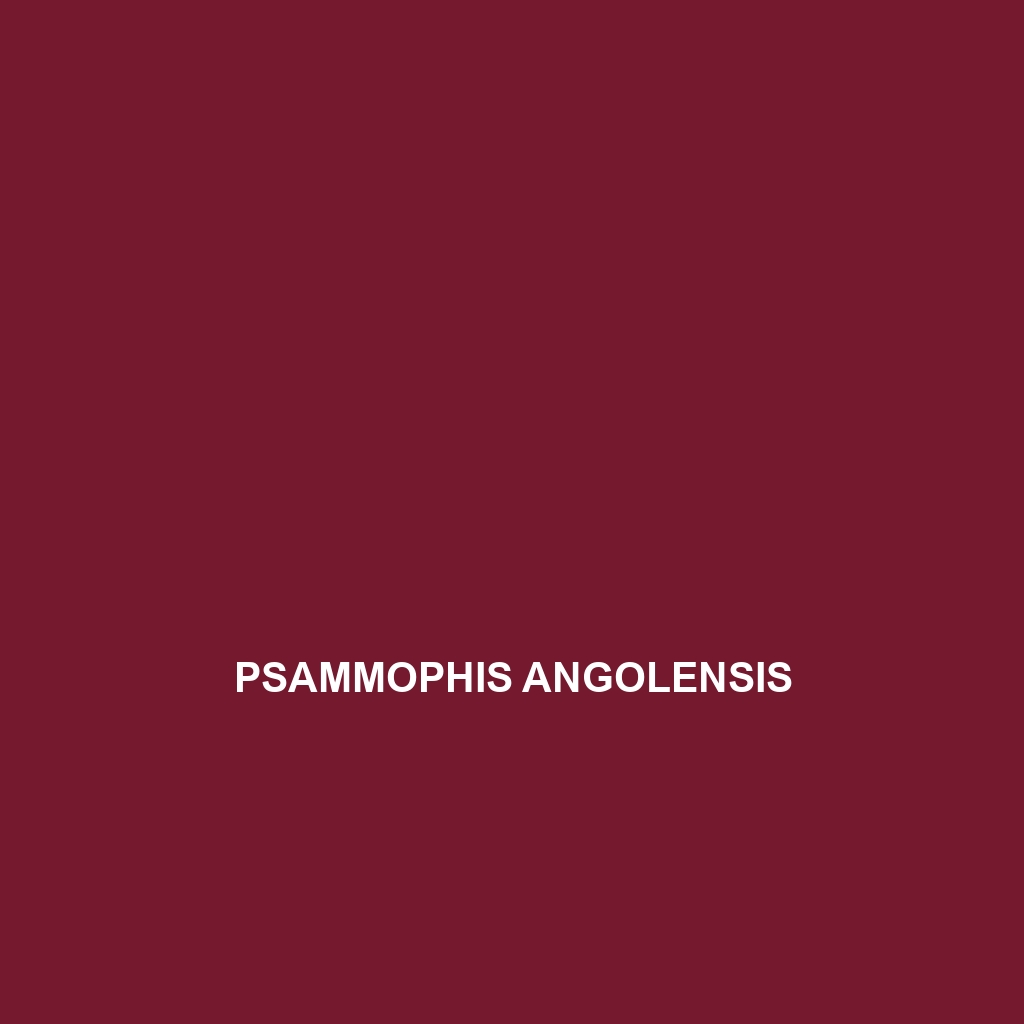<b>Psammophis notostictus</b>, also known as the striped sand snake, is a slender, diurnal reptile native to arid regions of northeastern Africa, notable for its striking light brown coloration with dark stripes. This carnivore primarily feeds on small rodents and lizards, playing a crucial role in maintaining ecological balance within its diverse habitats.
Tag: wildlife conservation
Psammophis leightoni
<p><b>Psammophis leightoni</b>, commonly known as Leighton's Sand Snake, is a slender, agile snake found in the arid regions of sub-Saharan Africa, known for its light brown coloration and dark stripes that provide effective camouflage. This carnivorous species primarily preys on small mammals and insects, playing a crucial role in maintaining ecosystem balance.</p>
Psammophis angolensis
<p><b>Psammophis angolensis</b>, or the Angolan sand snake, is a slender, diurnal predator native to sub-Saharan Africa, known for its distinctive coloration and adaptability to various sandy habitats. Typically reaching lengths of 1.2 to 1.5 meters, it primarily feeds on small vertebrates and plays a vital role in maintaining ecological balance in its environment.</p>
Psammophis afroccidentalis
<p><b>Psammophis afroccidentalis</b>, commonly known as the Western Sand Snake, is a slender, medium-sized snake measuring 70-110 cm, characterized by its sandy brown coloration and dark blotches. Primarily found in the dry uplands and savannas of Sub-Saharan Africa, this carnivorous snake is known for its swift movement, burrowing behavior, and crucial role in maintaining ecological balance.</p>
Psammophilus dorsalis
Psammophilus dorsalis, commonly known as the Indian Sand Boa, thrives in arid regions of India, featuring a slender body that reaches lengths of 40 to 60 cm, adorned with sandy yellow and brown coloration for excellent camouflage. Primarily insectivorous and known for its burrowing habits, this species plays a crucial role in its ecosystem by helping to control insect populations and serving as prey for larger animals.
Psammophilus blanfordanus
<strong>Blanford's Rock Lizard (Psammophilus blanfordanus)</strong> is a slender, carnivorous lizard found in temperate forests and savannas of India and Nepal. This diurnal species, measuring 15 to 20 cm, adapts well to rocky environments, showcasing vibrant coloration that aids in camouflage and an important role in regulating insect populations.
Psammodromus hispanicus
<b>Psammodromus hispanicus</b>, commonly known as the Iberian sand racer, is a slender, diurnal lizard found in the southeastern regions of Spain, thriving in warm, sandy habitats. With a striking coloration and impressive agility, it primarily feeds on insects and plays a crucial role in regulating local ecosystems.
Psammodromus algirus
<strong>Psammodromus algirus</strong>, or the Algerian Sand Racer, is a small, agile lizard native to the Mediterranean region, thriving in sandy habitats with well-drained soils. Known for its striking coloration and diurnal behavior, this insectivorous species plays a crucial role in controlling insect populations and serves as a significant indicator of ecological balance.
Psammobates tentorius
Introducing the Angulate Tortoise (Psammobates tentorius), a unique herbivore native to the savannas and temperate forests of southern Africa. Renowned for its high-domed, intricately patterned shell and remarkable resilience to drought, this tortoise plays a crucial role in its ecosystem by aiding in plant population control and promoting biodiversity.
Protobothrops trungkhanhensis
Protobothrops trungkhanhensis, commonly known as the Trung Khanh Mountain Viper, is a striking snake native to the rainforests of Southeast Asia, particularly Vietnam. This nocturnal predator exhibits distinctive brown and green patterns for camouflage, grows between 60 cm to 120 cm in length, and plays a crucial role in maintaining ecological balance by preying on small mammals, birds, and amphibians.









